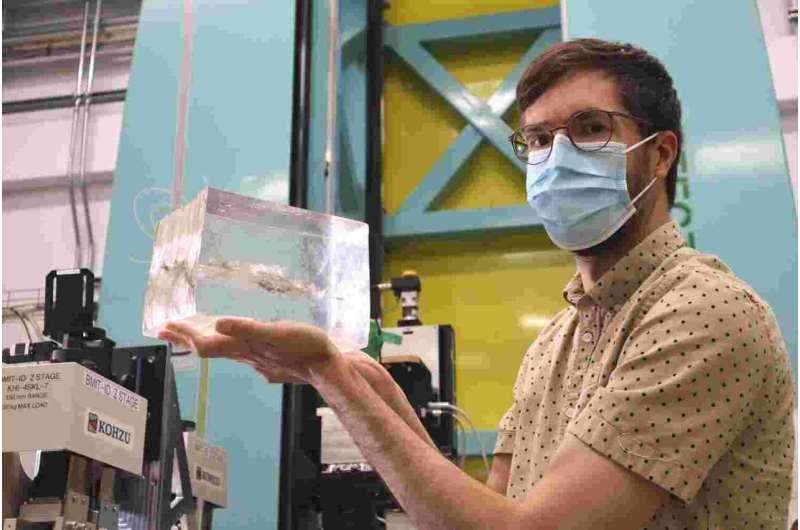
The lead in some bullets used for hunting is toxic to the humans who eat the meat and to scavenger animals that feast on the remains left in the field
For the first time, a team of researchers from the Canadian Light Source and the College of Medicine at USask studied the spread and size of bullet fragments in big game. Their findings were published in a peer-reviewed journal.
Similar to a scene from the hit television series CSI, the research team fired bullets into blocks of the same material that law enforcement agencies use for testing.
They were able to distinguish lead fragments from other materials using the BMIT beamline. The deer bone was encased in a similar density to flesh in order to make it look like hunting.
The team found that the lead fragments were much smaller than they had been shown to be.
Leontowich said that he wasn't surprised that bullets could produce hundreds of lead fragments. The fragments can be as small as a single human blood cell.
Medical radiography can't differentiate lead from other materials and can't measure fragments that small.
The researchers hope their findings will convince big game hunters to use bullets made of non-toxic materials, such as copper, instead of lead bullets.
The state of California has a ban on lead rifle bullets for hunting. There are warnings about the health and environmental risks of lead bullets in Nova Scotia and Prince Edward Island.
There are other types of rifle bullets on the market made of non-toxic materials. It's not necessary to buy a new rifle to use them. You don't have to worry about getting lead fragments in your food or in the environment.
More information: Adam F. G. Leontowich et al, Fragmentation of hunting bullets observed with synchrotron radiation: Lighting up the source of a lesser-known lead exposure pathway, PLOS ONE (2022). DOI: 10.1371/journal.pone.0271987 Journal information: PLoS ONE